2022 has been a strange year for cinema. Perhaps it’s only wishful thinking on my part but 2022 seems to have sounded the death knell on a lot of the trends that have been dominating the last decade of Western cinema. Streaming giants like Disney+ and Netflix have done weird things to the film industry as they show ever more confusion over how to use theatrical releases to their benefits, pushing mediocrity onto our multiplex screens and holding back gems in their home video vaults.
The big winners this year have been…well, it would be over-generous to call movies like Top Gun: Maverick or Avatar: The Way of the Water plucky underdogs, but they achieved commercial success by throwing back to a more retro age. Of course nostalgia has been the dominant taste-maker in pop culture for over a decade, but in a shallow way that embraced only the aesthetics of yesterday, these movies are refugees from the 1990s all the way down to their scripts, peddling a brand of sentimental optimism that’s eerie in the context of a cynical, irreverent internet era. You could almost call their old-school macho sincerity refreshing.
More prominent throughout this list are the mid-range movies that sank or swam on whether they found the right audience to appreciate what they were trying to do. It’s a realm where even a film as universally beloved as Everything Everywhere All at Once, isn’t going to be to everybody’s tastes. I’ve never, in all my years as a critic, found any two people with as much as the exact same top three films at the end of any given year, never mind top ten or more. You won’t agree with this list. Even I don’t agree with this list, and that’s because it was made equally by myself and any other members of the Film Obsessive writing staff who volunteered their choices.
So have fun reading our choices and hearing our perspectives, and on a personal note, thank you all for doing so, today and any other time this year you took to pay us some mind!
Aftersun
Picked by Hal Kitchen
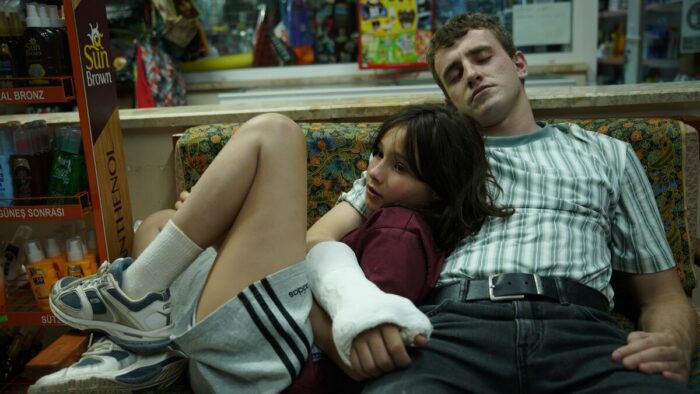
The directorial debut of Charlotte Wells, Aftersun is possibly the most assured first time picture of the decade. Possessed with a shocking level of confidence and artistic vision, the film has already topped many such lists as this and it’s evident why. An exquisite, sincere, painfully credible portrait of both parenthood and childhood, dovetailed together in the dreamy recollections of new mother Sophie as she looks back on the holiday she spent with her dad Callum.
Her parents have separated and Sophie doesn’t see her dad much. This might be the longest period of uninterrupted time the two ever spent together, certainly that they were ever alone together. Now that Sophie’s a mum herself, she’s looking back on her time with a father she knew both less and perhaps more than she would have liked. Aftersun is a film about twin tragedies: that of realizing your father is suffering, and that of realizing your daughter knows you are.
We never learn under what pressure Callum is precisely suffering, perhaps Sophie never did either, but despite, or maybe because of this, Aftersun succeeds in articulating the pain of parenthood, of always being “on” for your child, never for a moment allowing the mask to slip and them to see you for the emotional mess all we adults really are. It’s a universal rite of passage to understand that your parents are fallible, and that they are wrestling with things that you as a child had had no knowledge of, and yet it’s one I can’t ever recall a film expressing, not so flawlessly as this.
The Batman
Picked by Kevin Wozniak
You would think by this point that we would be sick of seeing Batman on screen. We’ve seen West, Keaton, Conroy, Kilmer, Clooney, Bale, Affleck, and Arnett portray the Caped Crusader on the big screen. We’ve seen him in different forms; campy, gothic, neon, old and angry, and even animated and in LEGO form. What else could possibly be done to our Gotham hero to make his story feel original and fresh?
Matt Reeves somehow pulled this off with The Batman, a new take on the iconic hero and the best Batman movie since 2008’s The Dark Knight. The Batman is equal parts an introduction movie for our new Batman and an introduction to our new Gotham City. Reeves’s Batman, played with perfect moodiness by Robert Pattinson, is only two years into his crime-fighting ways and acts more like a street-level detective than a city superhero. He is becoming obsessed with stopping crime and corruption and when he stumbles on a case that leads back to Wayne Enterprises, Batman starts rethinking everything he knew about his parents and his past life.
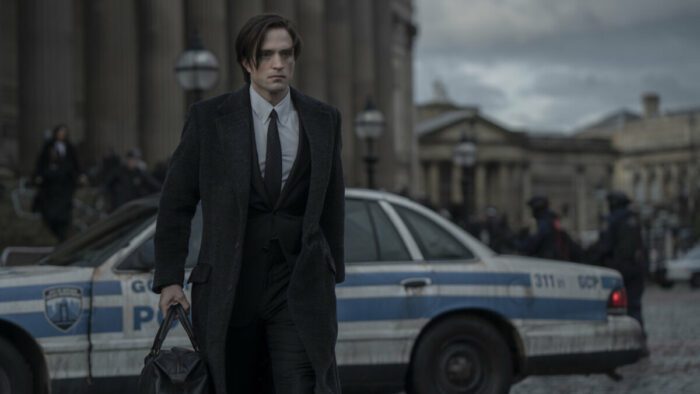
Reeves also takes us deep within Gotham, highlighting the grunginess of a once-prosperous city. We get a real feel for how corruption has run rampant across the city and how the crime lords rule it. This is Gotham in a way we haven’t seen before, both in its looks and how it behaves. Reeves has created a whole new world that leaves a ton of room for further exploration.
The Batman is a technical marvel. The score, cinematography, and production design are some of the best of the year. The action is brutal, exciting, and well-choreographed, especially the highway chase scene, which is one of the great movie moments of 2022. Matt Reeves has taken a familiar hero and made a movie that has me not only excited for future Batman movies but has me excited about this world and this Gotham City.
Sr.
Picked by Kevin Wozniak
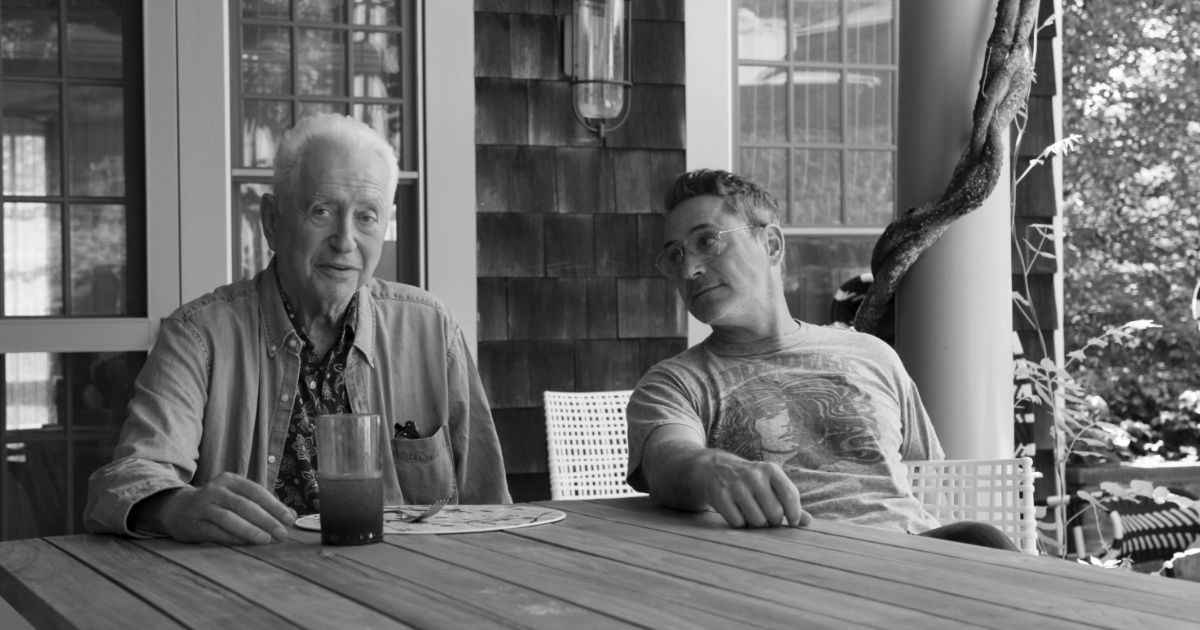
Sr. might seem like a movie star vanity project on the outside, but it is far more complex than that. Led by Robert Downey Jr., Sr. looks at Robert Downey Sr., the renegade New York filmmaker who made his name in the 1960s and ’70s with bizarre cult films like Chafed Elbows and Pound. This alone would have made for an interesting documentary, as documentaries about filmmakers and their careers, especially ones that I am unfamiliar with, fascinate me. Learning about Downey Sr.’s approach to filmmaking, his spirit of independent cinema, and how he influenced filmmakers like Paul Thomas Anderson would have been enough for me to enjoy this documentary.
But then we go to the next layer, which finds Robert Downey Sr. trying to make a documentary about the documentary about him. It’s a very strange and fascinating element to the film as we watch the genius filmmaker piece together the film that he wants to make.
The next levels get more emotional and are what make Sr. the best documentary of 2022. Sr. is about the father-son relationship and its complications. With Sr. being anchored by Robert Downey Jr., we get to see a father and son bond together in what feels like a way they never have before. They talk about their ups and their downs, filmmaking, growing up in the business, and being parents in candid and entertaining conversations.
And as the movie goes on, Sr. becomes a movie about reconciling with the death of a parent. We watch as Sr.’s health starts to decline and see how Jr. handles it while also handling being a father during a tough time. It’s heart-wrenching stuff and the most vulnerable we have ever seen Robert Downey Jr. on screen.
Sr. is a beautiful and fascinating tribute to a legendary filmmaker and our fathers and will make you want to call your dad as soon as the credits roll.
The Banshees of Inisherin
Picked by Aqib Rasheed

Perhaps the strongest script of 2022, Martin McDonagh reunited with Colin Farrell and Brenden Gleeson in his fantastic tragicomedy The Banshees of Inisherin. The trio first created magic in the amazing In Bruges and their follow-up is somehow better. This is McDonagh’s strongest effort thus far.
The story is simple yet so resonant. Farrell and Gleeson play two early 20th-century friends living on an Irish island who find themselves at a crossroads when one of them doesn’t want to be friends anymore. The script is sharp, witty, funny, and tragic. Comedy and tragedy usually don’t mesh well, but McDonagh has mastered this genre time and again. He also has some terrific performances at his disposal. Farrell—having an outstanding 2022—gives the best performance of his year. He gets a majority of the movie’s funniest lines as a man who can’t understand why his best friend won’t talk to him. The aloofness and comic timing have never been better. He gives perhaps the best line reading of the year when he says, “I will not leave my donkey outside when I’m sad.” The supporting cast is equally great, especially Kerry Condon and Barry Keoghan. A scene between the two has recently gone viral and rightfully so. Both of them should be nominated for their performances and it would be amazing to see either of them win. McDonagh’s next effort can’t come quickly enough and fingers crossed it will be with this same talented cast.
Everything Everywhere All at Once
Picked by Emma Gilbert
An explosion of feeling that may define the decade. Everything Everywhere All at Once takes the well-trodden concept of the multiverse (although it was in development long before that concept became mainstream) and gives it a change of scenery. It’s romantic, in terms of love and in terms of how life is depicted. It’s a movie that is enamored with everything it has going on and avoids pretension by fusing or separating goofy and serious whenever need be. It’s like a salad; full of different ingredients, sometimes mixed and sometimes not, but altogether good.
Where it could have been nihilistic, Everything Everywhere instead asks, “what if everything matters?” An equally overwhelming question to “what if nothing matters”, expressed with a surplus of absurdizm and organic blood. It’s a movie that feels like a plea for love and kindness in the face of widespread confusion and suffering, which feels so timely that I was surprised at how long ago it went into production and completion. The chaos on screen mimics what my brain feels like amidst all the stress I’ve accumulated over the last couple of years, but in a defiantly joyful explosion. It gets violent, it gets sad, but bombastically so. It’s taking lifetimes of pain and coloring it in rainbow.

I think my favorite aspect of the film is its idea of spending eternities searching for one person who matters to you, or always finding that person. Evelyn and Waymond, despite all their troubles, seemed to find their way to each other in every timeline (except for the hotdog finger one where she is gay), which is a cheesy idea. But Everything Everywhere is in love with its own cheesiness, so it just works, and keeps working.
Nope
Picked by Hal Kitchen
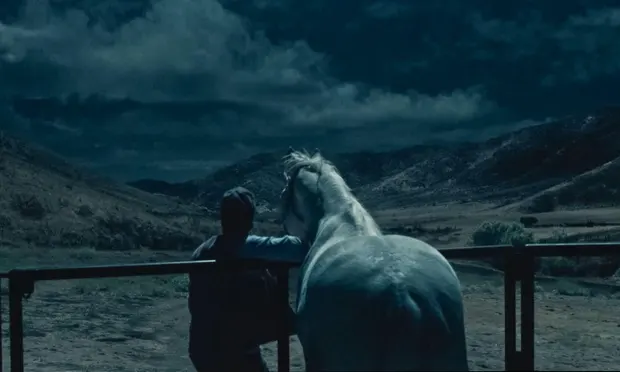
Jordan Peele’s third feature film and his third horror, Nope has big shoes to fill and could also have been regarded as a make or break moment in Peele’s career. His debut Get Out was widely acclaimed (to such an extent that it was recently included on Sight and Sound’s list of the 100 best films of all time) but his more obtuse follow up Us received a more mixed reception. Peele would hardly be the first hot young talent who struggled to live up to a breakthrough success and that narrative was starting to form. For some, Nope confirmed it. His slowest, most obscure film to date, Nope exploded the boundaries of genre further than either of its predecessors, being equal parts horror, art film, sci-fi, western, comedy and satire.
But as surely as this drove some people away from it, others were drawn in by its complexity, scope and drama, as it unfurled an epic adventure parodying the commodification of suffering, the tangled legacy of Hollywood and the complex, dysfunctional symbiosis of audience and subject. And goodness it’s fun too! What a rollercoaster it is, truly one of the most original, exhilarating, unique and outrageous blockbusters in recent memory. With fabulous performances from stars Daniel Kaluuya, Keke Palmer and Steven Yuen, mesmerizing sound design and staggering cinematography from Hoyte van Hoytema, Nope is horrifically brilliant, giddy and tantalizing in every breath, and as sure a piece of evidence as one could ask for that Peele intends to continue pushing genres in exciting new directions and holding up a scabrous funhouse mirror to our sickening reality.
Top Gun: Maverick
Picked by Kevin Wozniak
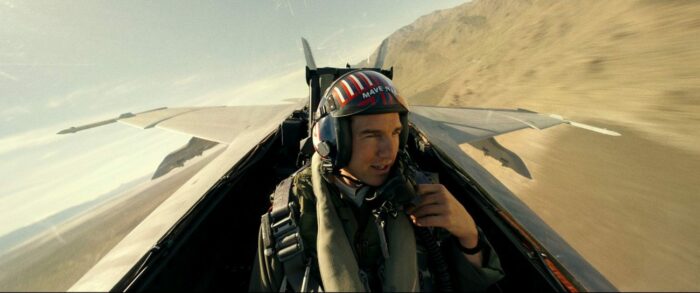
Regardless of what you think about Tom Cruise, there is no denying his star power and the things he will do to entertain us. From climbing the tallest building in the world to hanging off the side of a plane, Cruise wants to entertain us on the biggest screen possible with as many people watching as possible. Despite numerous offers to go straight to streaming, Cruise insisted Top Gun: Maverick be released in theaters when audiences would come back to see movies following the COVID-19 pandemic. The result was the cinematic event of 2022 and one that will go down as one of the most important movies of the post-pandemic cinematic state.
Top Gun: Maverick is one of those rare sequels that exceeds the original film in every way. That isn’t a knock on Tony Scott’s original high-flying bro-down that has become a seminal piece of ’80s cinema, but Top Gun: Maverick takes everything to new levels. The high-flying action sequences are slick, thrilling, and immaculately photographed and staged, the core story of an aging Maverick (Cruise) showing a group of young pilots the ropes before an important mission is well-written and more emotional, particularly when one of the young pilots is Bradley “Rooster” Bradshaw (Miles Teller), the son of Maverick’s former partner, Goose.
And at the center of Top Gun: Maverick is Cruise, who gives a performance that defines what it means to be a movie star. In an era where movie stars are few and far between, Cruise proves that they still exist and are still needed in today’s Hollywood and that they can make great movies that bring people to the theater.
Turning Red
Picked by Hal Kitchen
Just as Luca saw its origins in Enrico Casarosa’s wonderful short La Luna, so too did Turning Red‘s director Domee Shi prove her concept with Bao, the short film released to accompany The Incredibles 2. Turning Red approached the same themes and conflict as Bao, but from the opposite direction. While Bao refracted an Asian mother’s empty nest syndrome through her experience raising a willful little dumpling, Turning Red follows a teenager as she chafes at the constraints placed upon her by her overprotective, clingy mother. Mei Lee (Rosalie Chiang) is an overachieving thirteen-year-old whose upbringing under the close supervision of her mother Ming (Sandra Oh) reaches a crisis when she discovers friends, boys, boy bands and the ancient “inconvenience” the women of their family have been left with: upon coming of age, they will start to turn into giant red pandas whenever their emotions get the better of them.
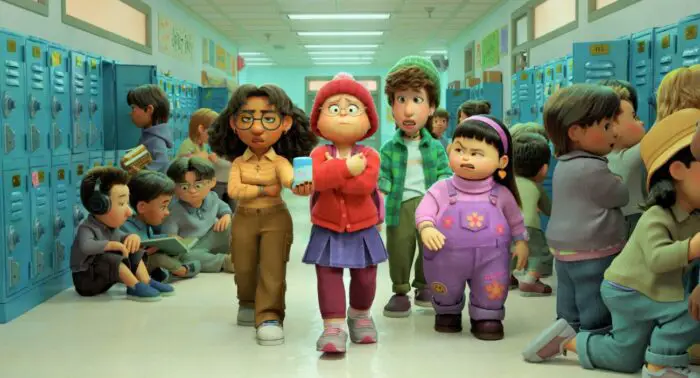
Much hay has been made of this as an allegory for puberty and menstruation, which is certainly is, at least at first. But as the film goes on it becomes increasingly a metaphor for Mei Lee’s independence and freedom as a woman; the freedom to be free, to be messy and to have a life beyond her family. In his review of the film Thirteen, Roger Ebert cited an aphorism that the two worst years of a woman’s life are the year she’s thirteen and the year her daughter is, and Turning Red embraces those same parallel inter-generational growing pains. The film shows us not only how Ming’s well intended protectiveness is stifling her daughter’s identity, but how she herself is a product of a similar upbringing from her mother. Her motives become a lot more understandable and relatable once we see this and the film’s bittersweet ending is extremely touching.
Like Luca before it, Turning Red is one of Pixar’s funniest films to date, with hilarious animation and character based comedy that’s universally relatable precisely because of it’s specificity. It’s the details that are most evocative, both of time period with the film’s early ’00s Toronto conjured with magnificently imminent nostalgic detail, and of scenario. The energy and wit with which scenes like these have been observed and performed bring them to vivid and exuberant life.
One of the film’s most inspired choices is to explicitly reject the interpretation that the film is teaching children not to respect their elders and heritage by tying Mei Lee’s burgeoning freedom directly to her ancestral line, she’s not rejecting her culture and background by expressing her individuality, she’s embracing it. It’s a great moral, empowering kids, and particularly girls, to be themselves and celebrate their own identities. It sounds extremely trite, “be yourself” is such an anodyne message, but the brilliance of Turning Red is in highlighting the ways in which it’s not. It’s a hard thing to actually do, no matter who you are, and Turning Red manages to reveal how reductive and constrictive discourse about this topic usually is. The fact we’ve seen so much push back to it’s moral shows you that there is still something tragically subversive about encouraging teenage girls to indulge their passions and do what makes them happy. More than anything though, what’s great about Turning Red is it’s just so much fun! It looks wonderful, colored in beautiful soft pinks and yellows, the songs are deliciously cheesy bubblegum pop, the action is exciting, kinetic and funny and the characters are all so larger than life and endearing.
Barbarian
Picked by Emma Gilbert
I lost some sleep over Barbarian, which, as a very seasoned horror fanatic, almost never happens to me. I quite adore the ad campaign for it, as it told me just enough to get me interested, and not enough for it to lose its punch. It may not be particularly unique with its monster reveal, but it’s the writing behind it that makes it more effective. Barbarian has one of the best “show don’t tell” plot elements I have seen in recent memory, delightfully disturbing and grim. There is corroded, bloody filth having a party in the text and visuals, and strange, disorienting fish-eye views immerse the viewer in its dank catacombs.
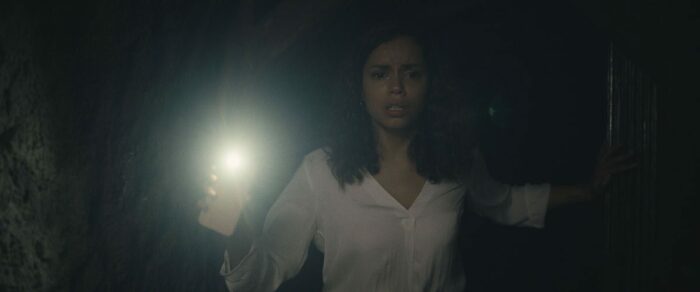
Barbarian is the movie I wanted Men to be. It has something to say about the disconnect between men and women from a couple of different angles that provides the nuance Men just didn’t have in my eyes. Barbarian tries its hand at a comedic approach to the critique of misogynists of several different breeds, and it really landed for me. Its handling of the character AJ is my favorite, as it balances how truly foul he is with a brilliantly written “laugh at not with” character.
It’s a work of horror that made me fall in love with the genre all over again. It uses a certain balance of funny and scary that has always caught me hook, line and sinker. It’s a special thing these days for a movie to actually scare me out of my skin. It’s a feeling I appreciate; something about it makes me feel alive. I’m not going to say it takes something truly deranged to get me to feel scared, just a certain concoction of things seemingly built to get under my skin. Barbarian did that for me.
Moonage Daydream
Picked by Hal Kitchen
While most rock biopics focus on the tabloid details of their subjects, Bowie‘s artistic vision is as much under Moonage Daydream‘s microscope as his psyche is and it proves just as elusive. Both are facets of the obscure sublime the film hopes to reach through abstraction, and by abjuring more mundane methods, Moonage Daydream succeeds in creating an artistic portrait rather than a journalistic one. As such, it may frustrate those hoping for a more academically dispassionate and inquiring look at his artistic innovations, cultural impact or personal faults. Moonage Daydream is less obituary and more ode.

Beginning in the early seventies with Bowie already an established performer, the film explores the journey of his life and his ever-changing relationship to his art, moving from vivid caricatures of gender and identity to seeking sonic innovation and purity, before indulging in the humanitarian mainstream acceptance that readied him for settled middle age and the romantic commitment he’d long claimed himself inadept for. Bowie’s media wanderlust is greatly to the film’s benefit, suppling director and editor Brett Morgen with a wealth of music, stage performance, video, film, costume, make-up and painting to use as his brush. The footage conveys his talent in a way a dramatized biopic never could. I loved his paintings and it cannot be overstated what a delectable monster he was onstage or how he touches the sublime when he dances. The openness and honestly with which he is presented—both by Morgen, and as he presented himself in interviews—absolves any sins of self-absorption or pretension. He was beautiful, affable, sensitive, humorous and at all times appears unbothered by other people’s judgment, trying to improve only for his own sake, always trying to learn and grow and be all he could.
One might well credit Bowie with being the film’s true auteur. His work is the river, and Morgen’s curation the valley that allows it to flow. Their combined efforts—along with those of Morgen’s extended team—construct an effigy of Bowie that is sincere, humane and vulnerable, a man ever questioning himself and the course he’s leading, all while presenting a mask of outward confidence and composure. The beauty is that this Janus never seems fragile. In hindsight, Bowie’s life took him everywhere he needed to, making him exactly who he needed to be, to the world, and to himself, and its inspiring to see someone appear to live a life and leave it with so little reason to regret.
Men
Picked by Hal Kitchen
Yes, the controversial Men: Is it too obvious or not obvious enough? Is it reveling in women’s trauma or exorcising it? As a man himself, is this even Alex Garland’s story to tell? Neither, the latter and possibly not but who cares when it’s this much fun! I don’t know about you, but I skipped out at the end of this film beaming. It’s fantastically weird, giddily funny, skin-crawlingly grotesque and eerily beautiful, hitting not one false note from start to finish. Garland’s commitment to making haunting nightmares as captivatingly beautiful as this is an X-factor that makes him one of my favorite modern filmmakers. The verdant greens, the lurid reds, the lustrous soundscape, it’s a delight to watch from beginning to end as it gleefully wends its way down its hellish male-strom of misogyny, dissecting twitchy toxic masculinity like a science fair frog.
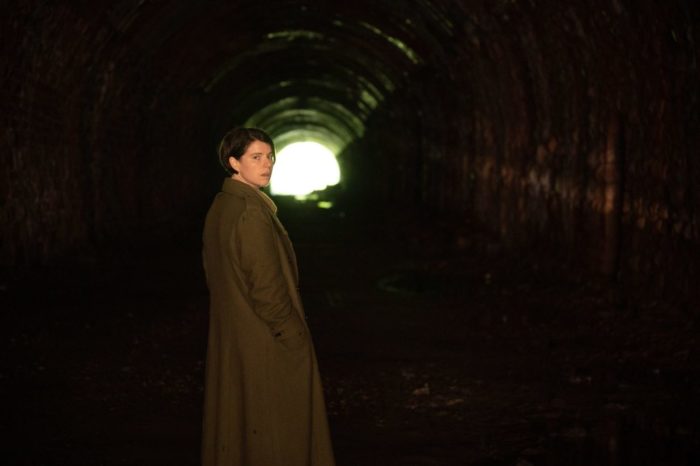
The film explores some similar territory to Alex Garland’s previous work Annihilation. Both films present us with a middle class female protagonist, journeying into the unknown and haunted by the traumatic dissolution of her marriage, detailed in flashbacks. But while Annihilation was an exploration of the transformative effects of trauma, true to its title, Men has other matters at the forefront of its mind. The horror is the horror of Men: of the control they exert in society, the self-serving narratives they construct, the expectations they place upon women to accommodate them, and the sum total of the microaggressions they perform that leave non-men ill at ease. It’s honestly surprising more films haven’t been made about this, given the litany of films expressing men’s fears about women.
In my review of Women Talking, I said that Jessie Buckley was the film’s one false note, coming off too naturally self-assured and dangerous for her role. Here that self-assurance is exactly what we needed though. As Harper, she’s identifiably vulnerable, but hardened and fierce, we believe in her and trust her to fend for herself as she becomes jury at this trial of male entitlement. She’s no hysterical Catherine Deneuve or traumatized Susan George, she’s a normal adult woman staring her adversary in the face. The face of Rory Kinnear, who is absolutely killing it in his multiple roles here.
Fire of Love
Picked by Hal Kitchen
This superb documentary from director Sara Dosa uses additional animation and voiceover narration by actor-filmmaker Miranda July to compile astonishing archive footage—much of it shot by its subjects—to create a portrait the work and married life of Katia and Maurice Krafft, two of the 20th Century’s leading volcanologists. Their story is one that the history of volcano studies can’t be told without, so I was a little familiar with their work and fates—Werner Herzog‘s own volcanic documentary Into the Inferno drew heavily on their case study and research—but the finer personal and biographical details that form the basis of this documentary provide a more intimate and existential portrait of them each as people.
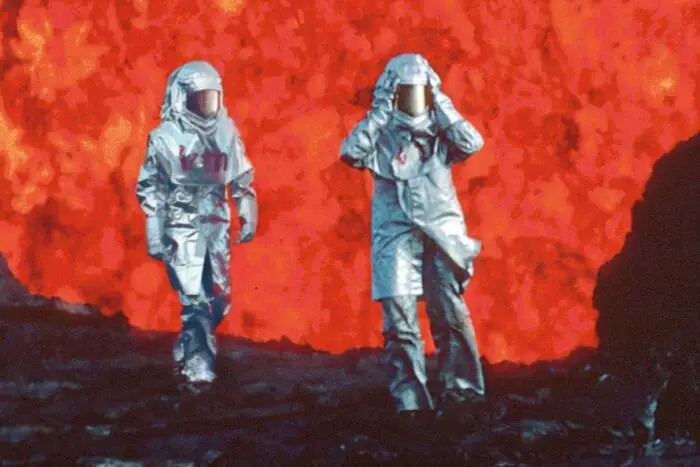
A documentary about two volcanologists in love—especially one whose subjects lived more than thirty years ago—could easily have felt very contrived with their unconventional and tragic life together lending itself a little too well to overwrought poetic simile. But Dosa is a fine documentarian who composes their biography with humour, beauty and pathos, but above all with a sense of legitimate scientific and historical inquiry. Volcanoes were their life’s work and so in telling their story, Dosa foregrounds that work. I’ve often said that all an audience requires to invest in a character is to see them indulge their passions, and Fire of Love understands that acutely. It doesn’t try and invade their marriage and seek out tabloid details, it focuses on the work they shared and the intimate differences in how they each approached that devotion.
By exploring the rich, eventful, routinely jaw-droppingly dangerous life they shared, Fire of Love reaches an existential nadir that glimpses perhaps the most important question any of us will ever have to answer: what would it mean for us to live, and to die, with no regrets? Would it be—as Fire of Love leaves sagely unspoken—to spend your life doing what you love, with someone you love? The study of volcanoes leads one to contemplate life on a geological scale, to think of one’s legacy and mortality, and the value of the satisfaction we derive from our passions. Once our own consciousness is permanently effaced from existence, what will our life have meant? The beauty of Fire of Love, and of the portrait of the Kraffts’ lives it paints, is that they confront these questions, and finds in the sublime not despair or fear, but a subtle form of romance, hope, joy and sincere, wondrous contentment.
RRR
Picked by Emma Gilbert
The whispers of this movie seemed to filter into my film circles out of the blue. It is the first time in my very short life I’ve personally witnessed a Western audience give an Indian film this much attention. At the time of its release, I was working at a movie theater showing it, and going off descriptions given by my coworkers who had peeked in and other film writers online piping up about it, I was very interested.
When I finally did get to see it, I was whipped to the floor. I’d never seen anything like it, so earnest in its blatant corniness that it never felt forced. Every scene says exactly what it wants to without meandering or feeling dishonest despite being so very over the top. It is easily among the best examples of maximalist filmmaking; big feelings, big scenes, and there’s room for all of it. It’s like the opposite of over-dramatic—It’s perfectly dramatic. Even when it could be seen as objectively silly, it isn’t in a way that’s out of place or unearned.
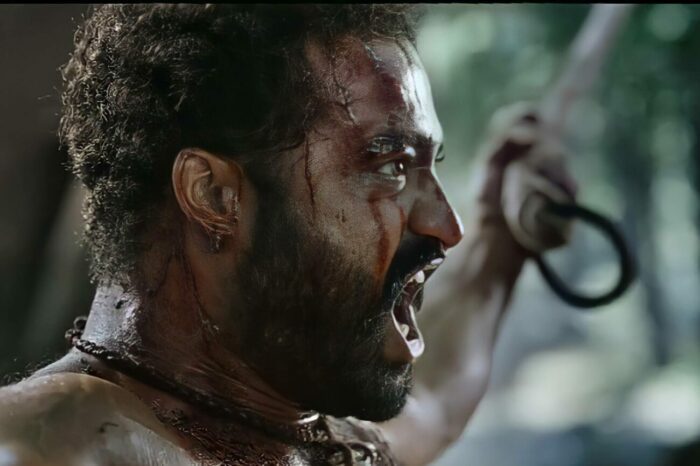
I don’t think I could pick a favorite aspect of this movie or even a favorite part, because so much of it is so very notable and special that when I ask myself the question, several different scenes come to mind. I can, however, make note of my favorite theme, which is the uprising against the British rule. Too often, films about people fighting against tyranny end in a call for peace (Zhang Yimou’s Hero comes to mind, though it is a film I far from dislike). “It’s wrong to kill, even when the person in question has killed many and will do so again.” RRR never once considers this as an option; those who have grown unworthy of mercy are treated as so, and there’s no stopping the heroes from completing their justifiably bloody warpath.
Badhaai Do
Picked by Emma Gilbert
Another absolute winner out of India, this time from Bollywood (not to be confused with Tollywood, from which RRR hails), about a gay man and a lesbian who attempt to live their separate lives under their families’ noses by getting married to each other. While queer people in India are still fighting for their rights, this film perhaps risked being misguided. Given that the country is so early on in its journey of queer liberation, queer films may still be stuck in a less than desirable state. I believe now that I was ignorant to brace for stereotypes and unkind jokes.
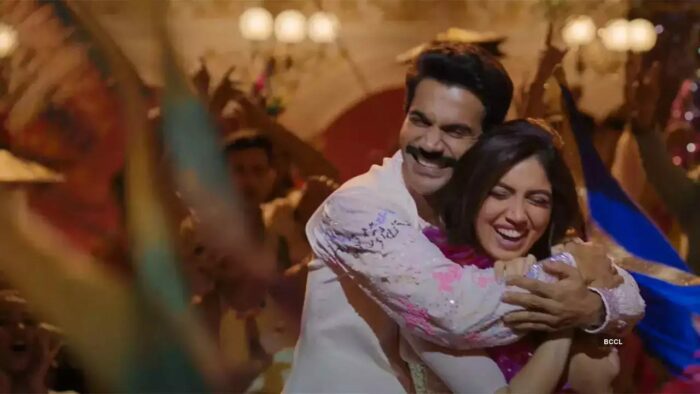
Badhaai Do is a wicked funny, emotional love letter to gay individuals and gay love. The length may be daunting, but it uses its time wisely. There’s never a dull moment, whether dramatic, riotously funny, or heartfelt. It’s full of perspective, exploring the climate in India surrounding LGBT+ rights with care and expertise, and allowing each character to be fully realized as a person and member of the community.
Perhaps its winning element is its lack of a tragic end, a trope a lot of LGBT+ representation unfortunately falls into. The characters in Badhaai Do get happy endings and futures. It does not shy away from the inherent struggles of being queer, but dedicates even more time to celebrating it. I stress again, it’s a movie that loves the people whose stories it’s telling. If you’ve been searching for an uplifting queer film, you needn’t look any further than Badhaai Do.
The Bob’s Burgers Movie
Picked by Emma Gilbert
Much like other movies of this breed, this is basically a very long episode of Bob’s Burgers, and it’s a great episode! I’m a sucker for a simple but good mystery that’s easy to follow and fun to watch unfold. Beyond that, The Bob’s Burgers Movie is sugar-sweet, animated in smooth 2D, and brilliantly written. One of my theater viewing audiences was cracking up the whole way through, and I find these days it isn’t often I’m in a screening where the audience has much of a reaction to anything. Maybe Bob’s Burgers is just that good!

Film extensions of television shows also enjoy featuring stronger emotional cores than many of their traditional episodes, which is exhibited in this one as well. I think that a lot of the time, these emotional drives run better when they have that pre-established content and character dynamic to work with. I cannot attest to how it holds up when a viewer doesn’t have the context of the series going in, but as a longtime fan, that little extra something was a wonderful contribution. It works with things that were already present rather than introducing new concepts, wrapping up at least one long-running plotline and answering an old question or two with sincere, simple storytelling.
I had a close family friend pass away this fall, and this was the last movie we got to watch together. I’m really, really glad it was this movie, because it’s all about love and laughter. We shared a lot of those things while she was around.
Black Adam
Picked by Emma Gilbert
I am the only person on earth who likes this movie, except for The Rock, I guess. I’m not going to call it an objective masterpiece (a sentence I’m unlikely to use anyways), but it is a ton of fun if you’re willing to have a seat with it on its level and allow it to exist as it is. It managed to really charm me with its corniness and earnestness. It spends a lot of time accentuating its visuals with overdramatic slow-motion, including odd or way-too-obvious song choices, and some very silly dialogue, but it means it every time.
What really gets me about this movie, oddly enough, is its message. I like it for similar reasons I like RRR (and please believe me when I say I am not comparing the two quality-wise). Black Adam is the first time I’ve seen an easily accessible big-budget Hollywood superhero movie that is willing to present the concept of, “hey, it’s okay to kill fascists, actually”, and doesn’t back down from that. I was pleasantly surprised by the conversations it was willing to have and not over-censor for the sake of being easy or palatable.

It’s a movie that also acknowledges the idea of “the Americans come to save the foreign country, hip-hip hooray”, and how it is far from peaches and ice cream. The Justice Society is actively not wanted in Kahndaq, and their no-kill policy is frowned upon. The film examines how the two viewpoints can mesh to create a better avenue for problem-solving, but doesn’t ask for its audience to look down on the character of Black Adam or his methods. It’s refreshing, and even though it’s a silly movie, there’s something really good at its core.
Terrifier 2
Picked by Emma Gilbert
I’m a huge fan of Terrifier and have been for years. I’ve always loved everything about it, so I was obviously pumped for a second one. In the turmoil following COVID, I sometimes wondered if we’d ever get to see Terrifier 2. I hadn’t really heard a peep about it since the trailer release a whole two years before it actually came out. When it did, there was a lot to be blown away by.
Terrifier 2 is an epic of a slasher. There is so much going on every minute, and unfortunately winds up meandering in places and tiptoes into being convoluted. However, this doesn’t detract from the overall feel, which is two and a half hours of “holy absolute f**k”. It is a full-throttle blood-fest that does whatever it wants. If ever you think “oh, no, please not that”, it does that, and then some. With not one but two clowns this time, there’s double the creeps, triple when you count the return of Victoria Heyes. But of course, it’s mostly Art the Clown in the spotlight, my perfect slasher whom I was so delighted to finally see on the big screen.
It was a real surprise that a slasher with this runtime could be so successful, and even more of a surprise when it garnered the attention that it did. As a pre-established fan, I had my tickets long in advance, believing I’d only have that planned one-weekend distribution window to see it. But then that theater run got extended again, and again after that. Unexpectedly, Terrifier 2 reached the attention of mainstream theatergoers eager to get a taste of what this gratuitously gory indie darling had that they hadn’t seen before. Months later, I am still bubbling with joy at this unlikely achievement; what Terrifier 2 means for indie horror and horror in general cannot be taken for granted, no matter your personal opinion on the series. A film with a budget of $250,000 raking in over $10,000,000 is a huge deal. Going forward, I hope this means more studios taking a chance on the weird and the nasty.
Decision to Leave
Picked by Hal Kitchen
Decision to Leave begins with a murder that looks like suicide and ends with a suicide that looks like murder. Part of the brilliance of nearly all Park Chan-wook’s films, is the tragicomic minutiae of daily life he crams them with. From the farcical efforts to recapture stolen soft-shelled turtles to the nuances of how much Hae-joon (Park Hae-il) and his colleagues are allowed to claim on expenses for lunch, Park brings the lives of his characters to vivid, absurdist life. The set pieces that arise from this ethos are truly superb, including two of the most deflatingly realistic foot chases in cinema history, but it extends to the ways genres get blended in his films. His approach to naturalism borders on the surreal, and romance, thriller and mystery get elided by the idiosyncratic nature of his approach to them all.
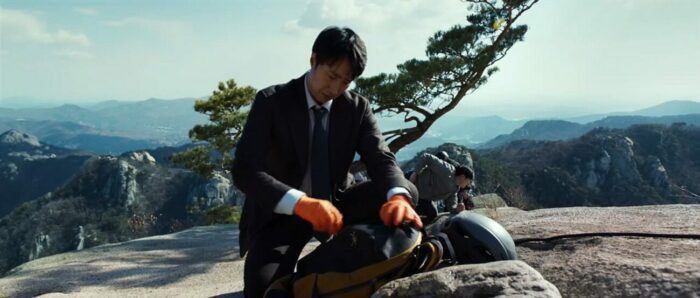
At the center of Decision to Leave is a phenomenal pair of performances from Park Hae-il and Tang Wei, whose sparkling, sexy interplay is no tawdry hot-and-cold amour fou as one would find in a more pedestrian film noir, but instead the far deeper desires of intimate domesticity, of truly knowing each other, in ways no one else ever has. The true bite of the mystery lies in the paradox of knowing someone sense of humor, how they like to sleep and what they carry in their pockets, but not say, whether they murdered their husband or not. As much as any romance put to film, we truly believe Hae-joon and Seo-rae love one another, yet what Decision to Leave lays out yet more plainly, is how near love and hate reside in the heart, and how obsession unites the two, like a strangler vine that’s somehow grown to ensnare two neighboring trunks. It’s a theme that has preoccupied the genre of film noir since its inception, but it’s never been handled so convincingly as it is in Park’s hands.
Prey
Picked by Beatrice Copland
Franchise burnout can be a real issue. It’s happened time and time again with the likes of X-Men, Terminator and Die Hard but there’s no single reason as to why this happens. Sometimes the sequels fail to capture the heart of the original film, sometimes a muddy production leads to a hodgepodge of a plot, and sometimes the primary motivation is money or keeping the IP out of the hands of other companies.
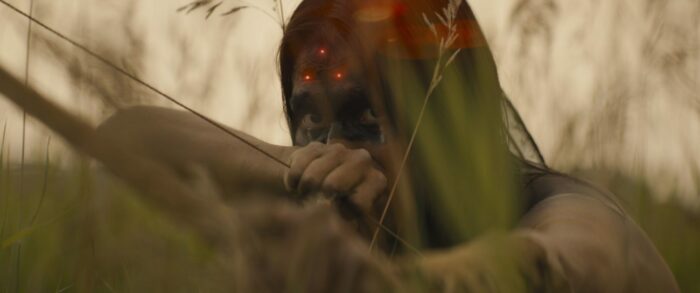
But then there’s Predator. You can call 4 films and two crossovers a franchise, but it hasn’t been leant on as much as something like Star Wars. The plot is simple, with humanity continually encountering an alien bred to be the perfect assassin, but it primarily works because of the tension. The Predator could be anywhere, thanks to a cloaking device, and relishes in a blood spilling victory.
This fell by the wayside with the sequels, except for the blood-lust which remained, but has returned with Prey. This time, it’s the turn of a Comanche warrior to take down this formidable foe as she attempts to prove her worth to her tribe and to survive. It’s a barebones plot with a barebones script and that’s one of it’s biggest strengths. When there is dialogue, it is fairly modern, but it makes up maybe 5 minutes of the total runtime. The focus on visual storytelling is complimented by a stunningly tense, and occasionally action-packed score, from Sarah Schachner. Being a simpler story with simpler surroundings, there are less places to hide any flaws and it feels like the production team understood that. It also doesn’t feel the need to set up more installments or characters, thanks in part to being isolated to such an old time period. This never feels like a sequel for sequels-sake, but an expansion of the under-examined world of Predator.
Three Thousand Years of Longing
Picked by Hal Kitchen
As you might be able to tell from this list, the past year has seen an unexpected resurgence of high-concept mid-budget genre movies. I honestly couldn’t be more thrilled about it, 2022 has surprisingly delivered some of the boldest and most idiosyncratic mainstream releases in years and Three Thousand Years of Longing continues this trend in wondrous fashion. While his return to the mainstream with the maximalist action epic Mad Mad: Fury Road was as dialogue light (or should I say, dialogue efficient) as any recent action movie, his follow up hews in the opposite direction, complimenting its equally stunning visual style with a tonne of rich, well crafted character and conversation.
Structurally, Three Thousand Years of Longing follows in the tradition of some of cinema’s earliest romantic fantasy epics like Der Mude Tod or Waxworks, a trilogy of stories spanning centuries, all tied together by their modern-day storyteller. Stories are central to Three Thousand Years of Longing from the outset, exploring ideas of why our cultures tell stories and why we as individuals seek them out. But the film soon dispenses with this intellectual curiosity and starts giving itself over to the sincere thrill and joy of stories and the telling of them. The stories the Djinn tells are magical, funny, romantic, poignant, dramatic and exhilarating, everything good stories should be and brought to life through some absolutely jaw dropping visuals. By this, I don’t mean the VFX are amazing, they’re often pretty ropy to tell the truth, but the production design, the costumes, the rich, vivid, verdant colours and stunning lighting that bathes each scene in delectable hues of red and gold, it’s just stunning.
As great as these fairy-tale stories are though, they’re matched by the brilliantly written inter-locution of the phenomenal central duo. So many authors deaden their fantasies when they try and invest them with realism—the film even acknowledges this process in one of its many moments of self-reflexivity—but George and Augusta Miller compose their story with such sensitivity and skill this malady never upsets their venture. As Alithea and her Djinn’s conversation gets underway, you’re gathered up in the arms of their story and swept away. What Miller has done here truly deserves to be celebrated, with him seemingly having achieved the impossible and made a film that’s a totally different genre but is, in its own way, every bit the equal of Fury Road.
Good Luck to You Leo Grande
Picked by Don Shanahan
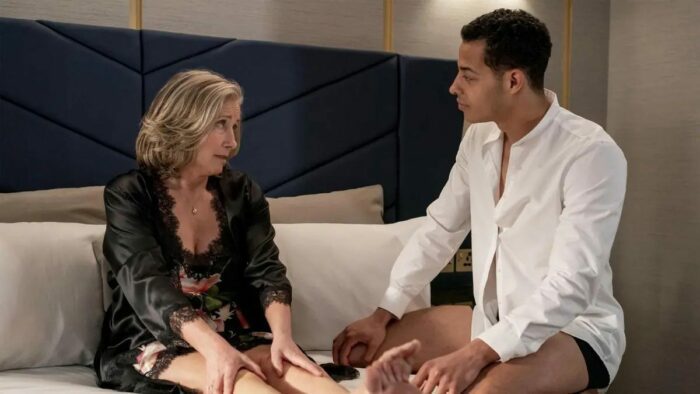
The brilliance and beauty of Good Luck to You, Leo Grande comes in its conversations. At first glance, I’m betting people think this movie is going to be a sex romp of avalanching bedsheets and inhibitions. All in good time! But rather, the Amazon Prime original film is about finding the connection and courage to be prepared and open for emotional climaxes as well as physical ones. And, it doesn’t mean jazzing up foreplay.
The esteemed Emma Thompson embodies the role of a widower who quite possibly has never known legitimate sexual pleasure. She has mustered up the courage to hire a dashing young escort, played by the fresh-faced Daryl McCormack, and meet him in a posh hotel room. Her nervousness is palpable with every admission and question she has towards what she thinks will happen. Simply put, she can’t shut up or get her head right. That’s where McCormack’s half of the conversation takes over to bust taboos, ease anxieties, and pop buttons.
Thompson and McCormack certainly made my awards ballots in the lead acting categories. Their many shared scenes in Good Luck to You, Leo Grande offer some of the best natural dialogue of the year. Credit there goes to Katy Brand’s screenplay to plot this slow-building course and director Sophie Hyde for extracting the right emotions out of what many will dismiss as the wrong kind of transgressions. Prudes need not apply to this movie. Yet, compared to the spicier hard-R content from the likes of Blonde and Babylon for example, the simple coitus of Good Luck to You, Leo Grande is a refreshing vanilla done exceptionally well.
The Northman
Picked by Don Shanahan
Like much of its own Nordic climate on display, The Northman raged like a force when it opened back in April. The Witch and The Lighthouse filmmaker Robert Eggers has shown himself to be a master of twisting mythology and moods alike. With a bigger budget and larger study backing, Eggers’ edges for The Northman are a little more square than his ambiguous norm for what became his most approachable film to date.

Borrowing heavily from the motifs of Norse mythology, The Northman follows the son of a murdered king and his life-long quest for revenge. Flanked by Anya Taylor-Joy, Clae Bang, and Nicole Kidman, the sinewy Alexander Skargard brings a savage heart to this tale that seethes anger as bitter as the weather. Dark and atmospheric, few movies have been more stern this year.
I’m surprised the year-end awards have seemed to have forgotten about The Northman in favor of the fall releases that are more fresh on the minds of voting committees. The film’s cinematography, music, production design, and costumes are all some of the best of 2022. They create an aura where the fact we’re on Irish and Icelandic locations becomes lost with the hatred and ritual on-screen.
Bodies Bodies Bodies
Picked by Beatrice Copland
Horror comedies are not yet a staple of Halloween. There are outliers like the Scream (satirical comedy), Scary Movie (straight up parody) and Nightmare on Elm Street (unintentionally funnier as it went on) franchises, but audiences seem to enjoy a good scare more than a good laugh at that time of year. Bodies Bodies Bodies is less of a laugh-out-loud film and more of a quiet-chortle film but that isn’t a bad thing. The story takes place on a particularly stormy night as a group of rowdy teens (and a man old enough to be their dad) are slowly killed off by an unknown murderer. It’s a classic whodunnit, with the added flair that teenage drama brings to every preceding, and the drama is definitely brought.
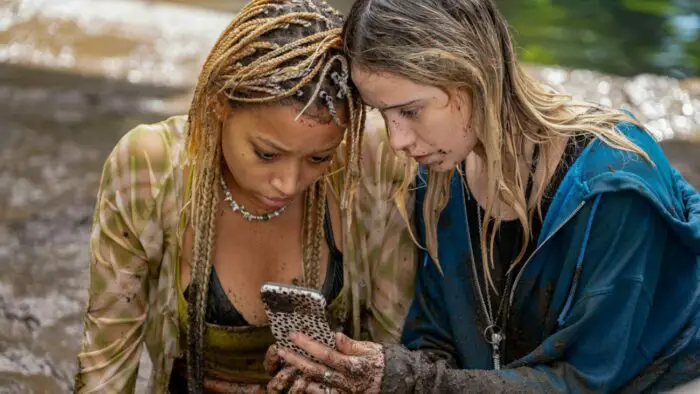
These teenagers are supposed to be unlikable. They come from wealthy families, bar one, and are having the party in a mansion. They pop champagne open with a sword and fear not for their own safety in the middle of a hurricane that has already killed the house’s power supply. They scream, they wave their hands and they turn on each other with the flip of a coin…like any rich teenager would. As character studies of the upper class go, this film is right up there with something like Do Revenge. The ultimate lesson, revealed by the murderers unmasking, is one that not many of them live to see but one that speaks volumes about the kind of people that they are. It’s entertaining throughout and provokes a little thought too.
Blonde
Picked by Don Shanahan
Ever since its release in September, I have found myself in the minority about Blonde. No matter how difficult or repulsive the depicted events evolve, the creative mission to adapt Joyce Carol Oates’ fictitious source novel was greatly accomplished. It’s a challenge to see where the dreaming ends and the madness begins, just as the title character says in the film. The production values composed by Andrew Dominik and his collaborators, particularly the shape-shifting cinematography of Chayse Irvin and the ethereal score of Nick Cave and Warren Ellis, are too good to deny merely because the content is abhorrent.
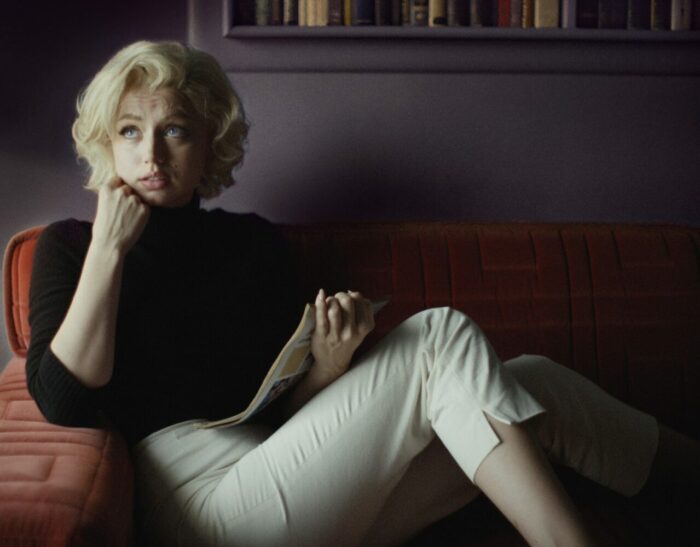
Blonde comes through in the tormented performance of Ana de Armas. Those tallying at home could count the lovely grins and triple, no, make that quintuple, the total to equal the number of droplets shed that streak across her attractive cheek and broken visage. You feel every one of them, and that’s the power of de Armas. Not a single glandular release from her striking eyes seems disingenuous. In depicting one icon, Blonde may have just launched another with its lead actress.
This may be harsh to say, but Blonde is allowed to rub this loss in our faces. Like the industry revelations and pushback hashtag movements of this last decade, people need to believe women like Marilyn Monore, say something when they see wrongdoings, and help these situations. Because, if this can happen so severely to the brightest we ever had, it can–and has–happened to hundreds of the smallest too who never made it like Norma Jean Mortenson did. If it means we need to witness a harsh fictionalized interpretation to remind us of the need to increase lasting accountability, so be it. Movies like Blonde that can weather that burden and evoke such responses deserve to be appreciated for their courage.
Till
Picked by Don Shanahan
With the biopic drama Till, director Chinonye Chukwu had one very particular goal (of many) that I appreciate. She was adamant about not showing Black violence on-screen to chronicle the storied murder of Emmet Till. In a very visual modern world of “show” over “tell,” it was a forthright choice that paid off to create stirring tension and drama.
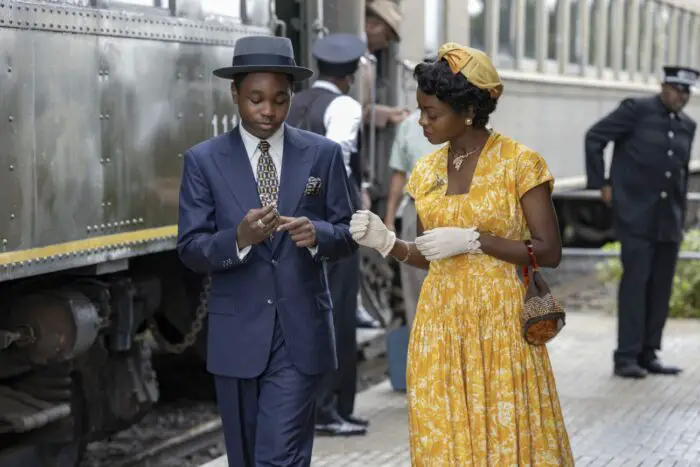
We often forget how our own imaginations can fill in the narrative blanks in an engaging story. More often than not, what we imagine is likely worse than what could be explicitly shown or depicted. That’s the heart-wrenching power of Till. It draws our empathy with both grace and strength.
The heart of both those traits come from a star-making performance from Danielle Deadwyler as Mamie Till, the mother of a teenager lynched in 1955 Mississippi. Till is a mother’s movie first and foremost where those fears, wishes, and emotions expressed by Deadwyler are the nucleus to the support and challenges that would follow the heinous crime. She is a rightful Oscar contender. Beyond her towering lead performance, Chukwu has made a very poignant film that should be shown in every middle school classroom in America. Take it from the resident school teacher here at Film Obsessive.
Marvelous and the Black Hole
Picked by Don Shanahan
Somewhere in the vast collection of coming-of-age movies, there’s a subcategory of mentorship stories within the genre. Maybe it’s the school teacher in me– thrust into a place to help younger generations on a daily basis– but I’m an unabashed sucker for a good mentor story. They are so needed nowadays and, honestly, the more mismatched the mentor and mentee the better. That’s the spine of Marvelous and the Black Hole, which began its deep festival run at Sundance in 2022.
Miya Cezh (Nickelodeon’s The Astronauts) is the distraught and destructive teen Sammy. Within the last year, she lost her mother and has not been keen on her father (Westworld’s Leonardo Nam) moving on to a new woman (TV actress Pauline Lulu). As a punishment for her poor grades, Sammy is sent to summer community college classes that she would just as soon ditch than attend. In one of her escapes, she runs into a children’s magician named “Margot the Marvelous,” played by the charming Rhea Perlman.
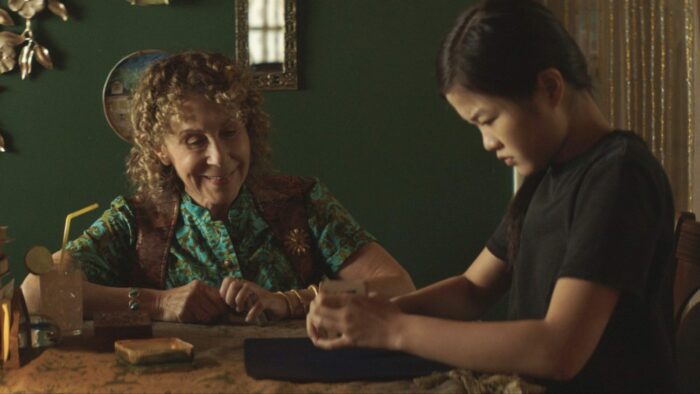
Sammy takes an interest in the minor razzle-dazzle and gets Margot to take her under her wing. Teaching the teen some corrective missing manners, patience, and responsibility alongside the tricks with every line of “Try again,” Margot makes a healthy impact on the kid. Perlman’s combination of tough love and inventive mentorship emerges as a wellspring of missing quality time for Sammy.
The interactions between Perlman and Cech are as challenging as they are inspiring. Low-hanging generation gap jokes are traded for mini-adventures of positive guidance on what becomes a mutual rocky road for self-improvement. Magic cannot fix everything, but it’s a good start. Marvelous and the Black Hole is the braver kind of feel-good movies I wish were made more often. In a year like this one, it counts as buried treasure.
Relative
Picked by Don Shanahan
You can call this a bit of a “homer” pick from me, but I don’t mind taking this space to lift up a micro-budgeted film from my city of Chicago. Relative is the fourth feature film from Michael Glover Smith (Mercury in Retrograde, Cool Apocalypse), and it was shot in the affluent and diverse Rogers Park neighborhood on the north side of the city. For my money, I didn’t see a better movie this year that dissected the dynamics of familial bonds (and that includes Everything Everywhere All at Once).
The modern dramedy centers on the Frank family, headed by David and Karen (Eerie, Indiana’s Francis Guinan and Wendy Robie of Twin Peaks, respectively), and their adult children. The whole clan is reuniting for a celebratory weekend for the first time in several years when their youngest (Cameron Scott Roberts of The Walking Dead) is graduating from college. His older siblings (Emily Lape of Mercy’s Girl, steady TV actor Keith D. Gallagher, and Clare Cooney of 4400) are a mix of working adults juggling, and sometimes hiding, their insecurities. When David and Karen have surprising new plans for their now empty nest homestead, the light-hearted party begins to unravel to a parade of skeletons from various closets.
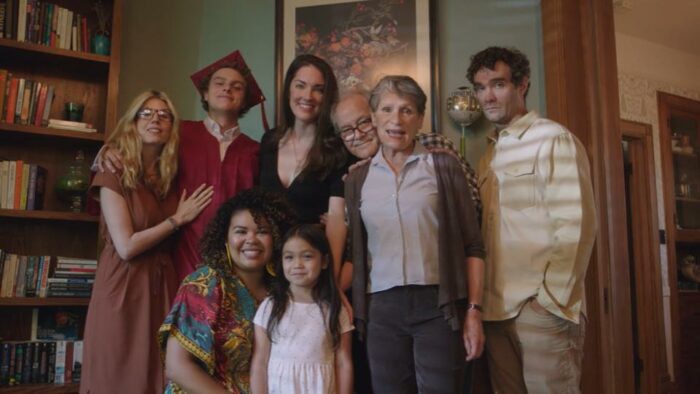
Directing his own very efficient screenplay, Michael Glover Smith demonstrated masterful patience in building shared character moments. Eschewing the theatrics of loud sitcoms that favor shouting matches to show off committed acting to portray fractured people, the sharp ensemble playing the Franks is granted space for feelings to percolate and crumble in more natural ways. Unlike tidy happy endings in simpler movies, the necessary healing that comes to light is not instant, automatic, or even available. Smith offers that wisdom and consequence to the viewer, and I greatly appreciated that stance.
Relative is currently touring the country on the film festival and art film circuit. Follow the film on its social media pages to see if it’s playing near you. When you find it, you’ll be getting a sweet little gem.
TÁR
Picked by Aqib Rasheed

Todd Field’s psychological drama is one of the year’s best and most challenging movies. It never takes its audience for granted, opting for the unconventional and ambiguous route rather than simple plot decisions. To some, this may be a turn-off and the world of classical music may seem too foreign. But those individuals are missing the point. This isn’t about classical music or Gustav Mahler. This is about Lydia TÁR’s rise and fall.
Cate Blanchett gives a career-best performance (and perhaps the performance of the year) as Lydia, to the point she makes you wonder if the character is based on a real person. This is the movie that has seemingly gone extinct: a big-budget adult drama based on an original concept. There’s no shoddy CGI in sight, no post-credit scene, and no big reveal. It’s a true character study with an outstanding screenplay that’s precise and sharp. The movie moves at a slow pace, but Field’s direction keeps you engrossed in Lydia’s turmoil. The scene between her and a Julliard student in a large auditorium is one of the best scenes of the year. Blanchett delivers eviscerating line upon line as the camera sweeps the entire room.
Not only is Field a great storyteller, but every technical aspect is also on point. This seems to be the year of swing-for-the-fences endings and TÁR certainly has one of the wildest ones—the last shot is one for the ages. The ending is one of many bold choices Field makes in this great movie, something Lydia also does (so much so it leads to her downfall). This is a perfect blend of director-actor-screenplay and hopefully, this won’t be the last collaboration between Field and Blanchett.
The Fabelmans
Picked by Kevin Wozniak
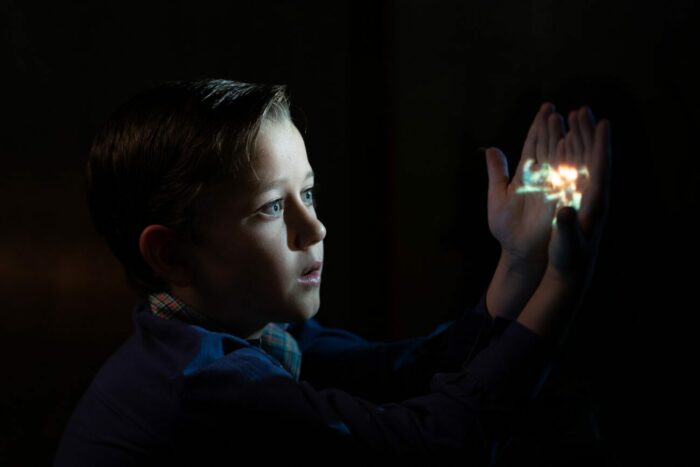
You would think that after having made some of the most iconic and successful films of all time over the last fifty years, it would be a tough task to continue to impress the audience and try something new. That would be the case for most directors, but not Steven Spielberg, who is continuously pushing himself as a director. In 2021, he dove into the musical genre with his bright and lively vision of West Side Story, and this year, Spielberg made The Fabelmans, a semi-autobiographical look at his life growing up.
Spielberg hasn’t been shy about his life growing up. He has openly talked about his parent’s divorce, how he wasn’t a good student in school because he was obsessed with making movies, and how the antisemitism he had to deal with growing up made him feel like an outsider. We’ve seen elements of this in films throughout his career, most notably in Close Encounters of the Third Kind, E.T., and Catch Me If You Can. But The Fabelmans brings all this to the forefront and shows us how Spielberg took his trauma and morphed it into cinema. Whether it was recreating a train crash from The Greatest Show on Earth that kept a young Sammy Fabelman awake at night, capturing his mother’s affair on a family camping trip, or photographing his high school bully in a way that made him look superhuman, Spielberg shows us how he made movies as a coping mechanism and how it helped him convey all of his bottled-up emotions.
Like all Spielberg movies, The Fabelmans is immaculately made and constructed with perfect performances by Paul Dano, Michelle Williams, Seth Rogen, a scene-stealing Judd Hirsch, and Gabrielle LaBelle, in one of the breakout performances of the year as teenage Sammy Fabelman. But it’s the emotion Spielberg brings to the film that makes it another great one in the director’s filmography. Spielberg wears his heart on his sleeve and gives us a beautiful movie about channeling trauma into art, the relationship we have with our parents, and following our passions. It’s outstanding work from the 76-year-old Oscar winner and a film, unlike anything he has ever made before.
Babylon
Picked by Aqib Rasheed
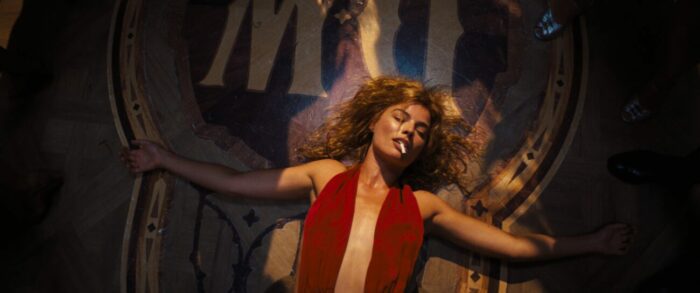
What more can be said about Babylon? Every reaction from a masterpiece to the worst movie of the year has been attributed to it. For this writer, it was the best movie of 2022. I was absolutely enthralled by this decadent yet debaucherous world Damien Chazelle creates. He riffs off of Boogie Nights and The Wolf of Wall Street and gets away with it.
I can see people finding Babylon unwatchable due to its self-indulgent nature, but that’s strictly why I loved it. Chazelle knows he has the capital to make whatever movie he wants—he is after all the youngest person to win Best Director at the Academy Awards. He somehow convinces Paramount to give him a blank check and uses every single penny in the most absurd ways possible. Margot Robbie, who gives an undeniable performance, fights a rattlesnake and it isn’t close to the wildest thing she does. It seems that Cate Blanchett will hoist the Academy Award in March, but Robbie is flat-out phenomenal. She would run away with the award in any non-TÁR year.
It’s interesting to see why Chazelle wanted to portray Hollywood in such a deranged light. La La Land was his true ode to Hollywood and it infamously lost Best Picture in embarrassing fashion. His follow-up, First Man, was technically sound but bombed at the box office. We won’t know if this is Chazelle’s take, but Babylon could be a way for him to process his last two movies in the form of a scathing “hate letter” to the industry. This movie could simply serve just to show that Chazelle loves James Cameron’s Avatar and that would be equally as fascinating (you’ll know once you see the movie’s incredible ending). To answer my initial question, the only thing left to be said about this insane film is to watch it and let yourself be taken away by Damien Chazelle’s outrageous vision.
Jackass Forever
Picked by Beatrice Copland
There’s something oddly endearing about the Jackass IP. On the surface, it’s just a bunch of friends pulling pranks on each other and performing dangerous stunts but at its core it manages to be a little bit more than that. The camaraderie shared between those on screen is almost infectious, in a way that makes the audience feel like part of the group, but there also isn’t trickery in their stunts. Hollywood, for the purposes of safety, almost always looks out for actors and never genuinely endangers them. The fight scenes are choreographed, explosions controlled and blood fake but that isn’t the case with Jackass. Obviously, there is still an amount of Health and Safety at play here (the insurance bills are quite something to behold) but everything on screen is genuine. They really will cycle into a wall, tase each other where nobody should be tased and generally cause damage to themselves for the sake of entertainment. There’s a certain amount of respectability in the honesty of their craft.

Copyright © 2021 PARAMOUNT PICTURES. ALL RIGHTS RESERVED.
Jackass Forever is, for the most part, more of the same that has made the core cast so famous. It’s mostly the same friends (Knoxville, Steve-O etc.) committing to more dangerously daft acts, but with some new faces too. Whilst Jackass 3 was a perfect closure for the crew that started it all, Jackass 4Ever is an equally fitting introduction to a whole new band of misfits. Whether this changing of the guard sticks remains to be seen but as handovers go there’s none as utterly ridiculous as this one.
Women Talking
Picked by Hal Kitchen
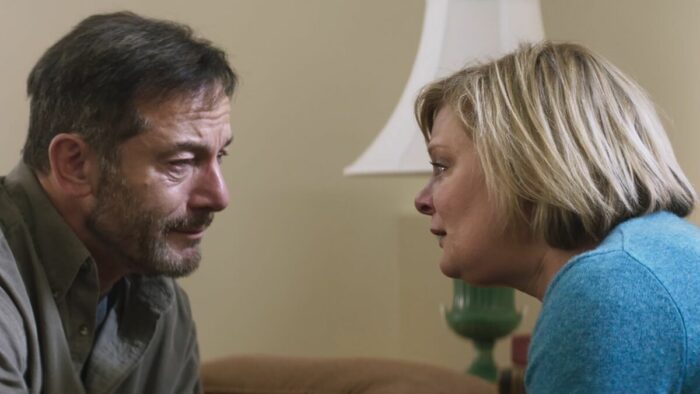
As I said when I saw it at this year’s London Film Festival, Women Talking is the most impressed I’ve been by a film since I saw Mass at the previous year’s festival. The two share many common elements. Both are conversation pieces where characters discuss a variety of perspectives on a real life social ill that has personally shaken them to their very core and in some cases consumed their entire beings. Women Talking explores an instance of institutionalized sexual assault from the perspectives of the women that institution preyed upon. Adapting Mirian Toews’s novel, Sarah Polley has made a film that is as incisive, precise, eloquent and thoughtful as it is poignant, beautiful and emotionally nourishing.
Following the women of an isolated religious sect as they discuss how to respond to their men’s demand that they forgive those who repeatedly and systemically assaulted them for decades, one would hardly hope to find Women Talking a life-affirming experience. And no, it doesn’t spare its audience the pain associated with such a subject, after all, why should it? Yet still, I left it elated, my cheeks stained with tears, inspired and warmed by it. It trades in neither trauma nor platitudes, but real, hard-earned resolution, character and humanity, defiant in its humor, grace and sheer beauty, with cinematographer Luc Montpellier finding wonder in parched fields of unloved grey.
The articulation and maturity of the intense, verbose script is matched by the eloquence and devastating power of the ensemble performances, and the stunning virtuosity of Sarah Polley’s production. Women Talking is the most complete film yet made about sexual assault and how we as a supposedly civilized society should process it. It doesn’t give you all the answers, but you’ll leave feeling equipped with the right questions.
Broker
Picked by Kevin Wozniak
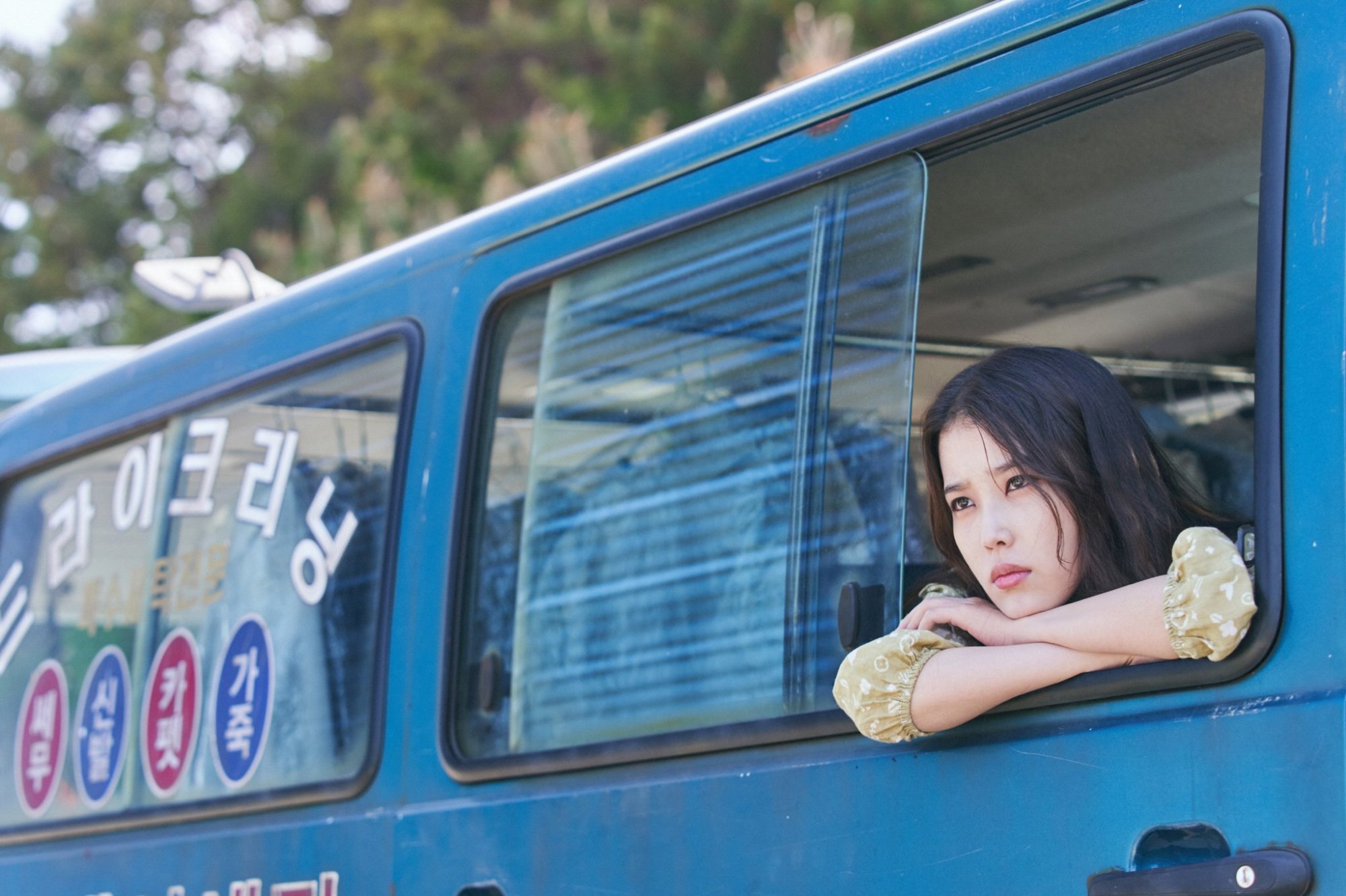
What makes a family? Do we choose our families or do they choose us? These questions, along with several others, loom large in Broker, the latest from Japanese master Hirokazu Kore-eda.
Song Kang-ho (who won Best Actor at the 2022 Cannes Film Festival) gives one of the year’s great performances as Sang-hyeon, a man in debt to the mob who works alongside Dong-soo (Dong-won Gang) as a broker, who take abandoned babies from churches and put them up for adoption for wealthy families. When So-young (Ji-eun Lee), who recently abandoned her baby, feels guilty, she finds Sang-hyeon and Dong-soo and joins them on a journey to find the right home for her child, all while the police and mobsters are hot on their trail.
Much like Kore-eda’s 2018 Palme d’Or-winning Shoplifters, the events and characters of Broker live in a moral gray area. Kore-eda asks tough questions about the morality of these characters and the decisions they are making and never picks a side. Kore-eda is too smart and too talented of a filmmaker to tell us exactly what to think and allows us to answer these moral quandaries for ourselves, which may differ depending on the viewer.
Broker is a heartfelt, beautiful story about the birth of an unexpected family. These people have been deserted by society and by other loved ones, yet their journey brings them closer together and allows them to start appreciating the importance of family and what it is like to be loved and wanted in a cruel world. Kore-eda takes his time to build this family, as we see them start off as essentially business associates and slowly become closer, learning to open up and grow closer together. There are several beautiful, tender moments between our characters that will pull right on the heartstrings.
Broker is a moving, emotional character drama from one of today’s finest directors.
The Outfit
Picked by Kevin Wozniak
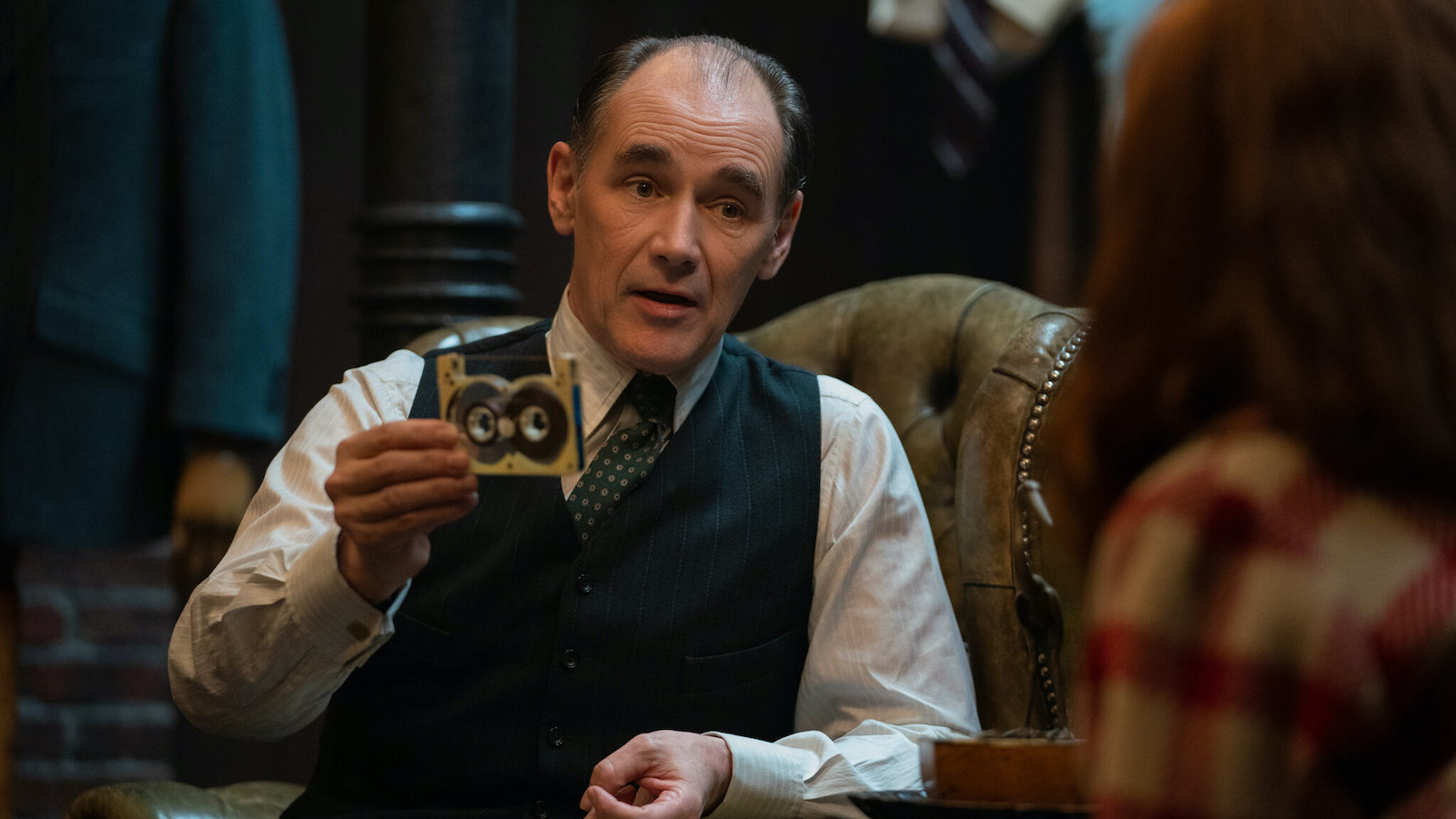
The genius of Graham Moore’s directorial debut, The Outfit, is its simplicity. The film takes place in one setting, features only a handful of characters, and its central plot is a basic one we have seen dozens of times in the crime genre: who is the rat in this group of gangsters?
But Graham’s screenplay, one that is miles better than his Oscar-winning screenplay for The Imitation Game, and his smart direction make The Outfit a great single-location thriller. The characters Graham develops are all interesting, from our mysterious and quiet cutter (Mark Rylance, his best performance since Bridge of Spies) to our mob boss (Simon Russell Beale) and the members of his gang and the rival gang. Graham’s dialog pops off the screen. It’s smart, quick, occasionally funny, and always necessary to the plot and the characters. Graham knows exactly when to land pieces of character or plot exposition but also knows when to throw a new twist into the plot. The Outfit is full of surprises and Graham always keeps you on the edge of your seat. Graham is always three steps ahead of us and when we think we know where the film is going, he pulls the rug from under us and twists everything we thought about what was taking place.
Set in 1956 Chicago, The Outfit is set solely in a small tailor shop that doubles as a money drop-off for the mob. Every event in the film takes place in one of the three rooms in the shop. Everything that takes place outside of the shop, from a gunfight between gangs to deals being made, is all done through phone calls and relayed messages. The tailor shop is rich with detail and Moore makes the shop feel big and roomy, especially in scenes with multiple characters, while also making it feel claustrophobic and tight when the tension is ramped up.
Brian and Charles
Picked by Beatrice Copland
There’s something so comforting about a British film. There’s a relaxed air about them but they don’t feel slow. They can have a slice of action without ever feeling like the stakes are too high or absurd. It’s a distinctly different vibe from many Hollywood blockbusters in a way that is difficult to explain except to say that these films often feel like a warm hug. For the most part anyway. Instead of being driven by action scenes, they are driven by characters and their circumstances.
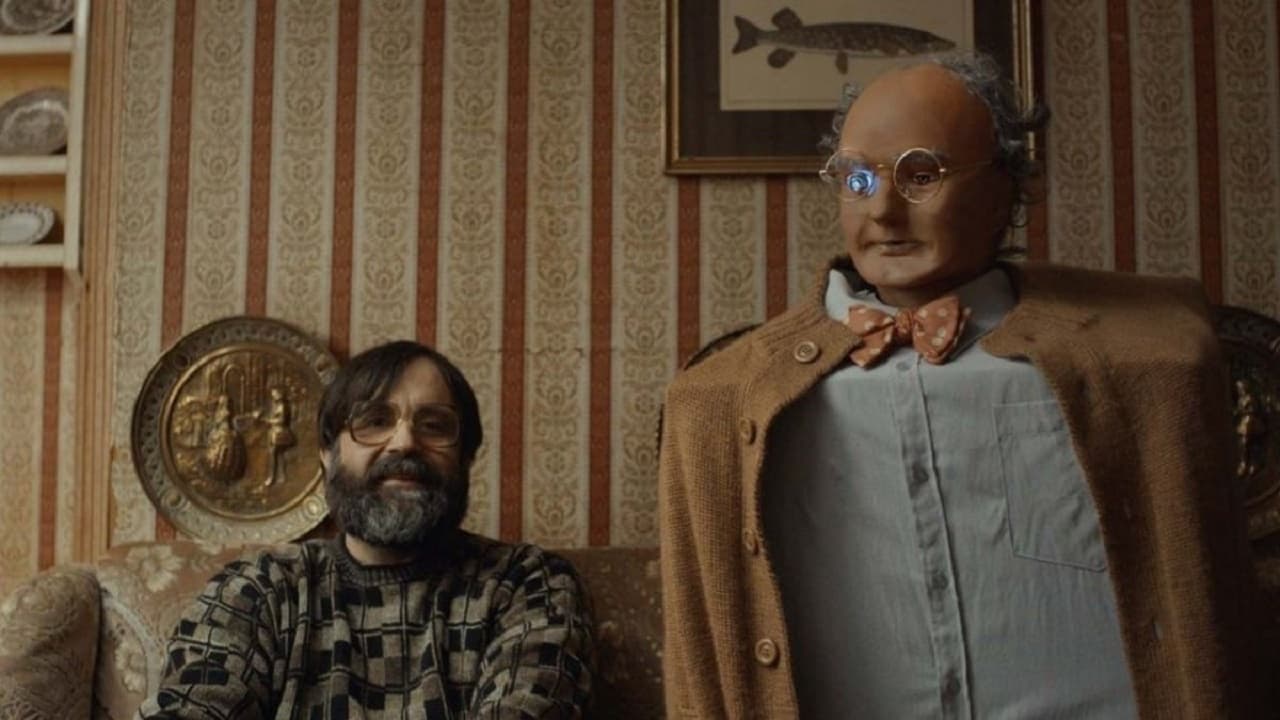
Brian and Charles is a shining example of this mentality. This mockumentary follows a local loner Brian in a small village in Wales as he builds a robot named Charles who becomes sentient. The local town bully soon learns of Charles’ existence and attempts to take him from Brian, who must finally learn to stand up for himself. It’s driven primarily by the father/son bond that Brian and Charles build, which makes them easy to sympathise with because most can relate to being a parent, a child, or both. As a sentient robot, Charles goes through an accelerated childhood. What parents go through over 20-ish years, Brian goes through in a couple of days. Charles’ design only adds to the humour as he’s just a big cardboard box with a mannequin head on top. There’s clearly a regular man inside but, like The Muppets, we allow ourselves to buy into the illusion and to care about him. This quirkiness continues with the whimsical score by Daniel Pemberton that feels like something a documentary would use but never feels cheap or forced. It’s perfectly British.
Do Revenge
Picked by Beatrice Copland
Teen comedies are difficult to get right. They are often written by people who have not been teenagers themselves for quite some time and, as a result, have an out of date idea of how teenagers speak and act. The best in the genre often have an element of sincerity to them and understand how to hit the right tone. There was a spur of these films in the 1990s with Clueless and Cruel Intentions, even carrying over into the early 2000s with Mean Girls, but they all felt of-their-era. Do Revenge is set in the present day, yet it feels like these classic tale in the way that it balances drama and character.
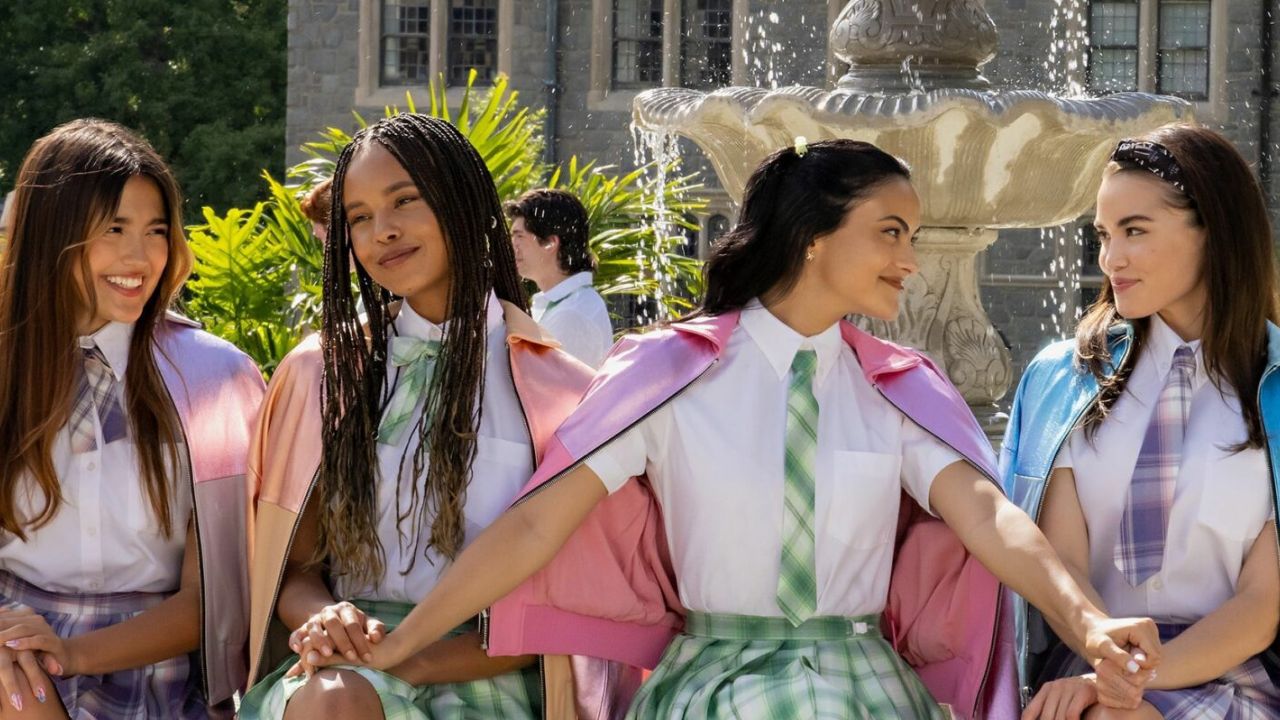
The story follows the recently dethroned queen bee of a posh high school and a slightly roguish newbie as they enact each other’s revenge plots, with a 3rd act twist that blows the rest of the plot open in the best way. It’s a campy film, but it knows and owns that with a comedic tone that screams 90s. It borrows from those earlier works too, but always feels more like homage than plagiarism. At the heart of the story are the relatable plights and blossoming friendship of the two leads. One who worked hard from an impoverished background to get to where she is and one whose experiences as a young queer person have defined her life. The rest of the students are snobbish in a way that teens can be without ever feeling like caricatures.
Do Revenge is a film that knows what it is and never shies away from that. It’s devilishly fun, with likeable characters, a bright tone and a rocking soundtrack. A worthy spiritual successor to the teen comedies of old.
Ambulance
Picked by Kevin Wozniak
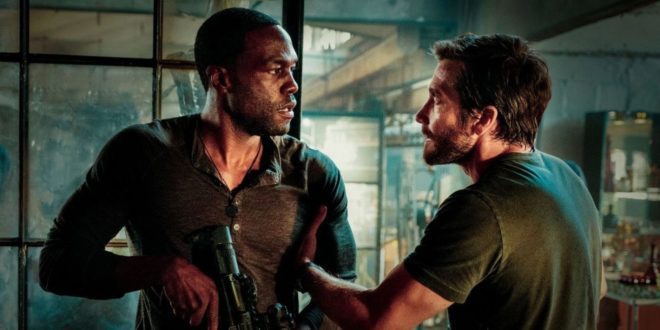
Yaya Abdul-Mateen and Jake Gyllenhaal are brothers who rob a bank for $32 million. The job gets botched, and they need a quick escape. In the midst of chaos, they shoot a cop and, in an attempt, to save his life and help them escape, they hijack an ambulance and take an EMT, played by Eiza Gonzalez, hostage in hopes she will help save the cop while they conjure up ways to get out of the jam they’re in. This is the plot of Ambulance, Michael Bay’s chaotic and wildly entertaining crime film.
Seeing Michael Bay’s Ambulance on the big screen was one of the great joys I had in 2022. It’s a movie that gets going right from the start and does not stop until the credits roll. It establishes its characters and its general plot all within the first ten minutes of the film. The remaining two hours are Michael Bay at his absolute best. It’s a heist movie that feels like Speed, Heat, and Collateral hopped up on cocaine and steroids. It’s non-stop adrenaline for two hours.
But through all the chaos, Bay showed why he is the best at what he does. Bay made Ambulance with a budget of $40 million, which seems insane considering how much action the film has and how good the film looks. Though the budget might have been smaller than other action movies in 2022 and other Bay films, he still made an action epic that takes us all over Los Angeles and features thrilling chase sequences and action shootouts. Bay also utilized drone camera work in a way no other director has done before, swooping the drones from the sky to the ground and flying through interior settings like the ambulance and bank.
By the time Ambulance was over I was out of breath, and sweating, my heart was racing and had an ear-to-ear smile on my face. It is relentless entertainment and full of non-stop Bayhem.
Devotion
Picked by Kevin Wozniak
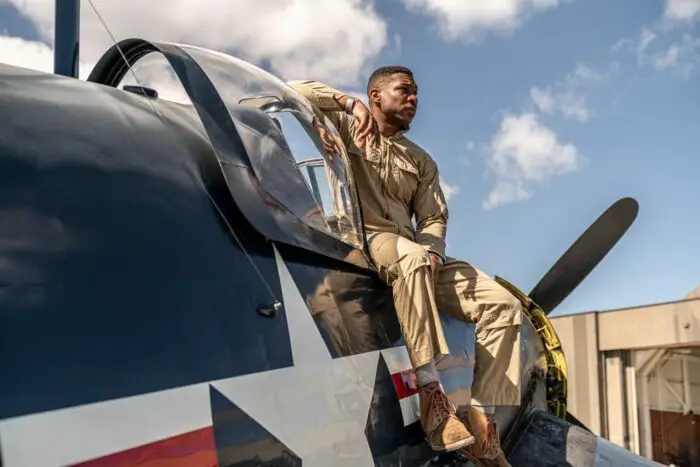
Devotion is a great movie about a great American hero that many people may not have heard of. Set in the 1950s, Devotion looks at Jesse Brown (a tremendous Jonathon Majors), a skilled Naval pilot and the only Black pilot currently serving in the Navy. Throughout the film, we learn who Brown was as a pilot and as a man, while also looking at his friendship with fellow pilot Tom Hudner (Glen Powell) and the military’s battles during the Korean War.
Director JD Dillard did not deliver a standard biopic about Brown. This isn’t a film that starts from Brown’s childhood, sees Brown’s upbringing and goes through the Naval academy, ending up with its hero becoming one of the best pilots in the Navy. The film begins and Brown is already one of the best pilots in the Navy and has established a life with a wife and a daughter. Dillard’s film is a story of perseverance, strength, determination, and friendship. Despite being one of the best pilots in the Navy, Brown continues to see plenty of hardship for being Black and he uses that to fuel his fire to be the best and shut all the negativity down, and prove his greatness. It is also a beautiful film about the friendship and bond between Brown and Hudner. Majors and Powell have perfect chemistry and you feel their bond slowly grow throughout the film, and, by the end of it, you understand and feel their friendship.
Devotion also features some exciting aerial battle sequences that are slick and immaculately shot, an excellent ensemble, and a great score from Chanda Dancy. Devotion gives a true hero his due.



